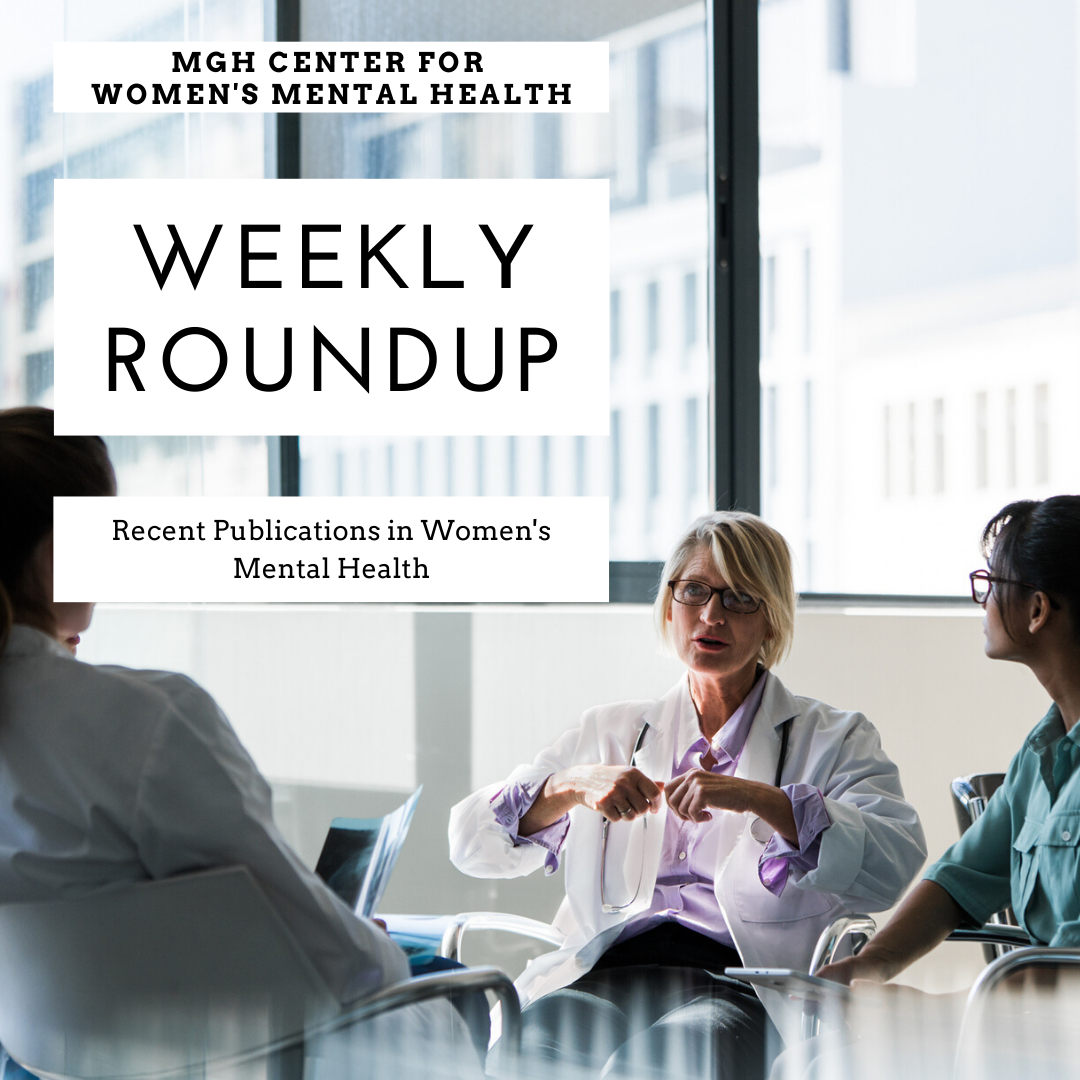
Every week we review the most recent publications in women’s mental health, covering topics related to premenstrual symptoms, perinatal mood and anxiety disorders, use of medications in pregnant and breastfeeding women, perinatal substance use, and menopausal mental health.
For more detailed descriptions of many of these topics, you can sign up to receive our weekly CWMH NEWSLETTER which comes out every Thursday.
And don’t forget to visit ESSENTIAL READS – a curated selection of up-to-date and clinically relevant articles in women’s mental health.
Ruta Nonacs, MD PhD
PMS AND PMDD |
| One Small Step for PMDD, One Large Step for Affective Disorders.
Rubinow DR. Am J Psychiatry. 2021 Mar 1;178(3):215-217. Joyce KM, Thompson K, Good KP, Tibbo PG, O’Leary ME, Perrot TS, Hudson A, Stewart SH. Addiction. 2021 Mar 2. Depressed mood may explain heightened cannabis use menstrually in females with pre-menstrual dysphoric disorder (PMDD). Richards MA, Oinonen KA. Psychol Rep. 2021 Feb 14. |
INFERTILITY AND MENTAL HEALTH |
| No articles this week
|
PSYCHIATRIC ILLNESS DURING PREGNANCY |
| Mental health of pregnant and postpartum women in response to the COVID-19 pandemic.
Perzow SED, Hennessey EP, Hoffman MC, Grote NK, Davis EP, Hankin BL. J Affect Disord Rep. 2021 Feb 25;4:100123. Free article. Interpersonal and contextual factors exacerbate risk and the impact of the pandemic on women’s mental health. Anxiety among fathers during the prenatal and postpartum period: a meta-analysis. Leiferman JA, Farewell CV, Jewell J, Rachael Lacy, Walls J, Harnke B, Paulson JF. J Psychosom Obstet Gynaecol. 2021 Feb 25:1-10. In a total of 23 studies, representing 40,124 participants, paternal perinatal anxiety rates are considerably higher than the global WHO regional prevalence rates for anxiety among men, suggesting that pregnancy may be a time of increased vulnerability to anxiety. Treatment of Psychiatric Conditions in Pregnancy Starts With Planning. Yonkers KA. Am J Psychiatry. 2021 Mar 1;178(3):213-214. |
MEDICATIONS AND PREGNANCY |
| No articles this week
|
POSTPARTUM PSYCHIATRIC ILLNESS |
| Evaluating Brexanolone for the Treatment of Postpartum Depression.
Payne JL. Expert Opin Pharmacother. 2021 Feb 27. Dadi AF, Miller ER, Mwanri L. BMC Pregnancy Childbirth. 2020 Jul 22;20(1):416. Free article. PPD prevalence was higher in the low-income countries (25.8%) than in the middle-income countries (20.8%) and reached its peak in five to ten weeks after birth. Poor obstetric history and social support, low economic and educational status, and history of exposure to violence were associated with an increased risk of PPD. Hochman E, Feldman B, Weizman A, Krivoy A, Gur S, Barzilay E, Gabay H, Levy J, Levinkron O, Lawrence G. Depress Anxiety. 2020 Dec 7 Potentially useful approach to identifying women at risk for PPD; however, in the population studies, only 1.4% of the women had PPD, suggesting that this model may underestimate risk. |
MEDICATIONS AND BREASTFEEDING |
| No articles this week
|
PERINATAL SUBSTANCE USE |
| Association of first trimester prescription opioid use with congenital malformations in the offspring: population based cohort study.
Bateman BT, Hernandez-Diaz S, Straub L, Zhu Y, Gray KJ, Desai RJ, Mogun H, Gautam N, Huybrechts KF. BMJ. 2021 Feb 10. Free article. 70 447 (4.4%) of 1 602 580 publicly insured and 12 454 (1.1%) of 1 177 676 commercially insured pregnant women had two or more dispensations of an opioid during the first trimester. Prescription opioids used in early pregnancy are not associated with a substantial increase in risk for most of the malformation types considered, although a small increase in the risk of oral clefts associated with their use is possible. |
MATERNAL MENTAL HEALTH AND CHILD OUTCOMES |
| Postpartum depression and infant development up to 24 months: A nationwide population-based study.
Lubotzky-Gete S, Ornoy A, Grotto I, Calderon-Margalit R. J Affect Disord. 2021 Feb 20;285:136-143. From Israel, PPD was associated with about 1.5 times increased odds of delays in personal-social skills, including reacting to voices (OR=1.43, 95% CI: 1.22-1.67) and pointing to selected objects (OR=1.47 95% CI: 1.10-1.97). Associations were also seen with delays in fine motor and adaptive skills, such as pinching (OR=1.50, 95% CI: 1.20-1.86), and gross motor skills, such as ground crawling (OR=1.36, 95% CI: 1.15-1.60). Kataja EL, Karlsson L, Leppänen JM, Pelto J, Häikiö T, Nolvi S, Pesonen H, Parsons CE, Hyönä J, Karlsson H. Child Dev. 2020 Mar;91(2):e475-e480. Infants of depressed mothers displayed increased attention to fearful faces; this tendency appeared to be independent of the timing of the symptoms in the prenatal or postnatal stages. Fitzgerald E, Parent C, Kee MZL, Meaney MJ. Front Hum Neurosci. 2021 Feb 12;15:635304. Free article. Hare MM, Kroll-Desrosiers A, Deligiannidis KM. Depress Anxiety. 2020 Dec 7. Women at risk for PPD but who do not develop depression do not experiences problems with bonding in contrast to women who are at risk for PPD and do, in fact, experience depression. Prenatal and postnatal maternal anxiety and amygdala structure and function in young children. Donnici C, Long X, Dewey D, Letourneau N, Landman B, Huo Y, Lebel C. Sci Rep. 2021 Feb 17;11(1):4019. Free article. Second trimester maternal anxiety symptoms were negatively associated with functional connectivity between the left amygdala and clusters in bilateral parietal regions; higher maternal anxiety was associated with increased negative connectivity. Postnatal maternal anxiety symptoms were positively associated with child amygdala volume, but this finding did not remain significant while controlling for total brain volume. |
MENOPAUSE AND MENTAL HEALTH |
| No articles this week
|
OTHER TOPICS IN WOMEN’S MENTAL HEALTH |
| No articles this week |



Leave A Comment